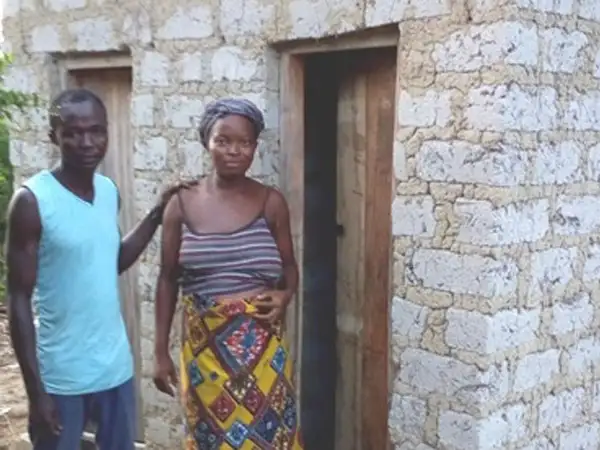Buy a community toilet
With your help, we can protect more families from deadly diseases as they go to the loo.


Sister Bernadette, our toilet-building nun in Sierra Leone.
We take toilets for granted – being able to use one safely and in privacy is something we should all be able to do, wherever we are in the world. Thanks to your donations, Sister Bernadette - part of our Church network in Sierra Leone - is building toilets for some of the poorest families.
“People find it a bit embarrassing to talk about toilets, especially with a nun. But access to a toilet is a basic human right. While you may be sitting comfortably, this right is denied to more than 4.5 billion people across the globe," says Sister Bernadette.
“The World Health Organization says that more than one billion people are forced to defecate in the open. Men, women and children, as well as elderly and disabled people, are denied dignity and privacy. That is why I am on a mission to get latrines built in some of the poorest rural communities across Sierra Leone.
“Few other changes can do more to improve health conditions for the less privileged in any society. At a stroke, the danger of waterborne diseases such as dysentery, diarrhoea and worm infestation is drastically reduced. Apart from the health benefits, halting defecation in the open immediately makes communities a better place to live.
“I know a thing or two about building latrines - when I was a girl at school in Nigeria, we pupils had to construct our own (under close supervision by our teachers, of course). It was a valuable lesson in sanitation, which was part of our curriculum, and one that has stayed with me.
Few other changes can do more to improve health conditions for the less privileged in any society.
“Participating in several workshops, run by Sierra Leone’s Ministry of Health and Sanitation, on how to construct community household latrines, using both local and imported material, has helped me to develop my construction knowledge.
“I recently worked with CAFOD building latrines in the southern part of the Sierra Leone. There’s nothing I don’t know about getting a latrine up and running.
“Here’s the technical, but very necessary bit:
The first step in constructing a domestic toilet is getting the head of the family to identify a space that is most convenient for the work.
Using a pick-axe and shovel, the family digs a pit 10 to 15 metres deep, which normally takes four or five days.
It is also up to them to gather crushed stones and sand before a trained village artisan comes in to cast the latrine in a 5m x 5m wooden mould, adding reinforcing bars to the stones, sand and cement.
We teach the family and work with them to build the latrine, so that they are proud of what they have achieved and can help teach others in the community how to do it."
“It takes about three weeks for the concrete to set properly, with the family being advised to pour water into the mould every day to cure the cement, making it harder and longer-lasting. This helps everyone learn about environmental sanitation. With this work, I can contribute to one of the millennium development goals, improving the health of communities and discouraging defecation in the open.


Bashiru and his wife - outside the latrines they built - with support from Sister Bernadette.
We have had less sickness. Cholera, diarrhea and vomiting were very common. But thanks to Sister Bernadette and CAFOD it is now a thing of the past.
“What gladdens me is to hear people like Bashiru, 43, married with four children, talk about the real difference a latrine has made to his family’s life.
“He said: ‘We are now using a latrine. We have stopped going to bushes and streams.
‘We have had less sickness. Cholera, diarrhea and vomiting were very common. But thanks to Sister Bernadette and CAFOD it is now a thing of the past.’
With your help, we can protect more families from deadly diseases as they go to the loo.